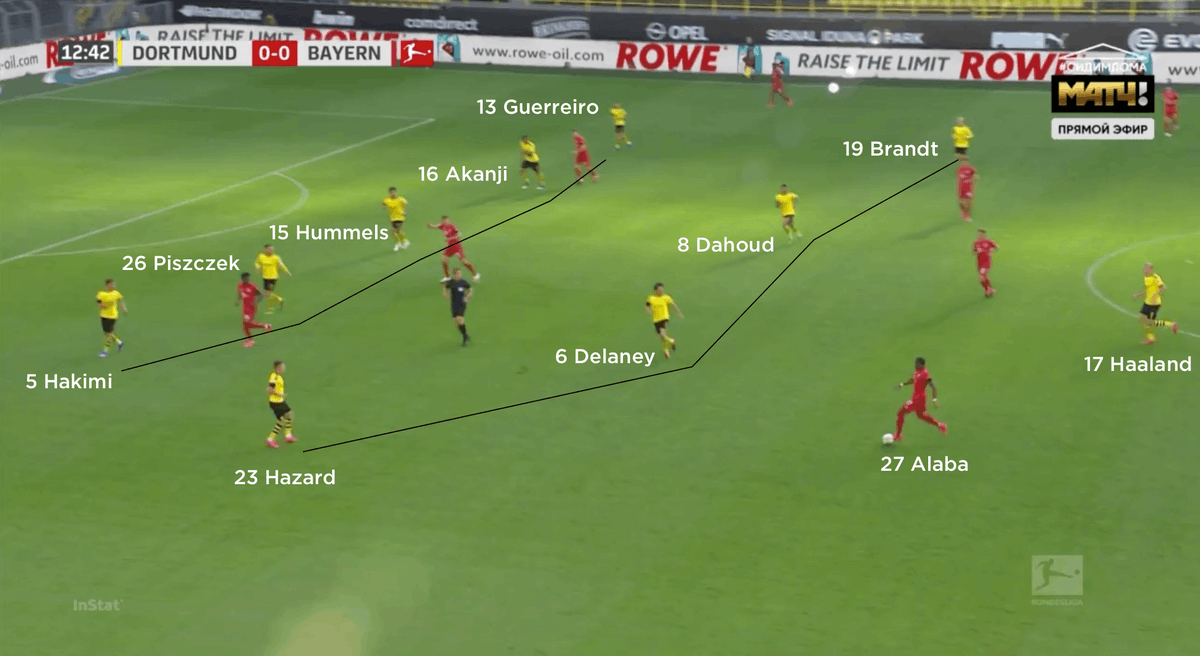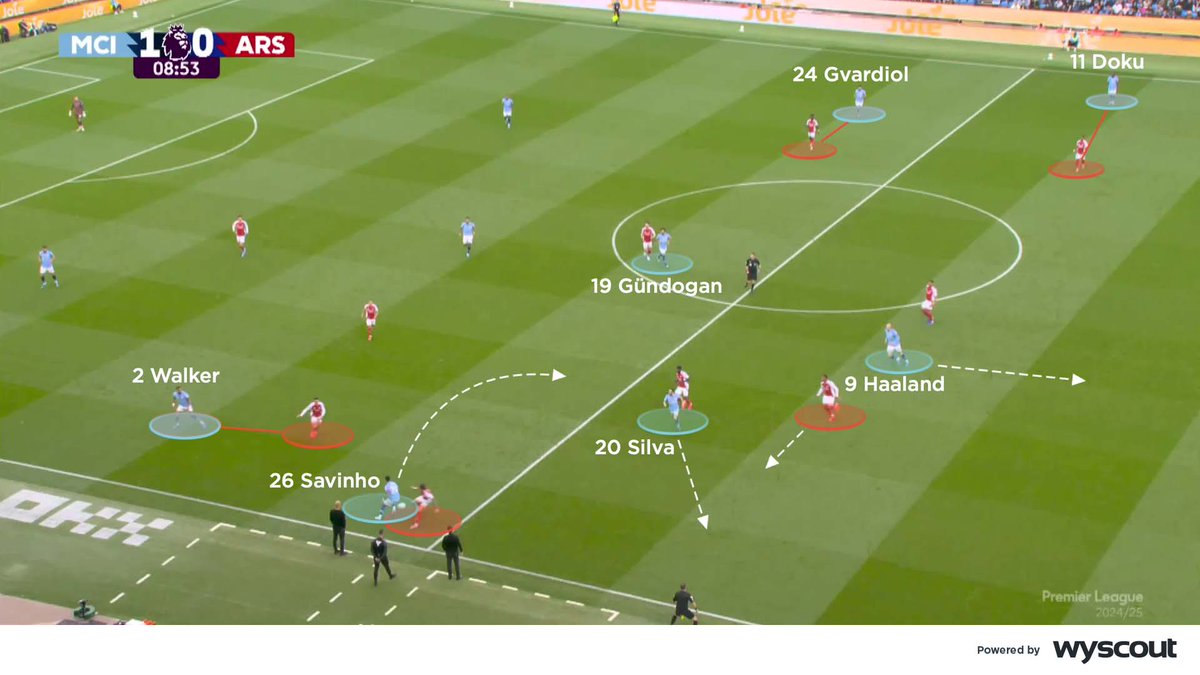🆕Fresh analysis! 🙌
Bayern Munich moved a step closer to winning the Bundesliga with victory at Borussia Dortmund, where Hansi Flick equalled Pep Guardiola’s record. Our professional coaches assess 👇
coachesvoice.com/tactical-analy… #BVBFCB
Bayern Munich moved a step closer to winning the Bundesliga with victory at Borussia Dortmund, where Hansi Flick equalled Pep Guardiola’s record. Our professional coaches assess 👇
coachesvoice.com/tactical-analy… #BVBFCB
Hosts Borussia Dortmund favoured a 3-4-3 formation, led by the front three of Julian Brandt, Thorgan Hazard and Erling Braut Haaland, while they had possession #BVBFCB 

That 3-4-3 became a 5-4-1, through Raphael Guerreiro and Achraf Hakimi withdrawing into defence, and Brandt and Hazard taking their places in midfield #BVBFCB 

Dortmund adopted defensive positions intended to discourage Bayern Munich from playing through central areas, in an attempt to trap them in wide positions #BVBFCB 

If Bayern advanced into those wide positions, Dortmund would increase the numbers they offered out there to limit their visitors’ options #BVBFCB 

Bayern retained a 4-2-3-1 formation throughout the periods they were in possession; Robert Lewandowski and Thomas Müller rotated in the final third #BVBFCB 

That 4-2-3-1 became a 4-4-2 when they were defending; Serge Gnabry and Kingsley Coman withdrew into midfield from their positions as wide attackers #BVBFCB 

Dortmund struggled to access the spaces that existed behind Bayern left-back Alphonso Davies, largely owing to the speed and power he consistently offers #BVBFCB 

The movements offered by Lewandowski and Müller posed a consistent threat; one prioritised running in behind while the other withdrew to towards possession #BVBFCB 

• • •
Missing some Tweet in this thread? You can try to
force a refresh
















